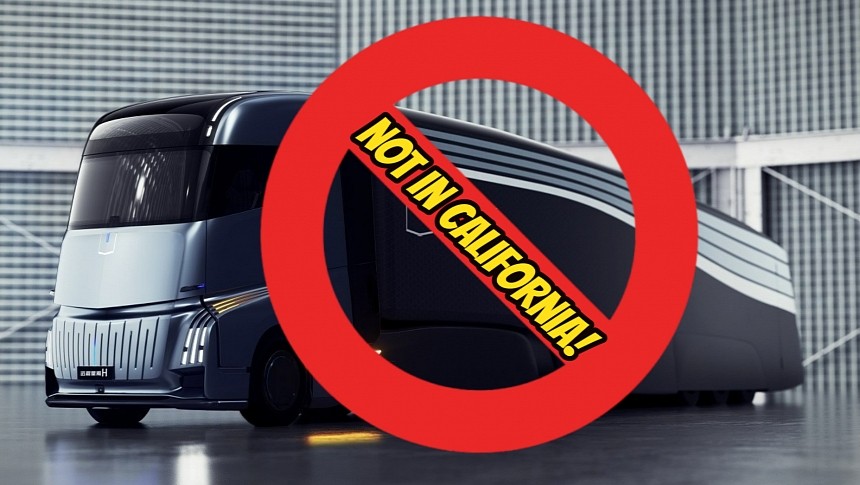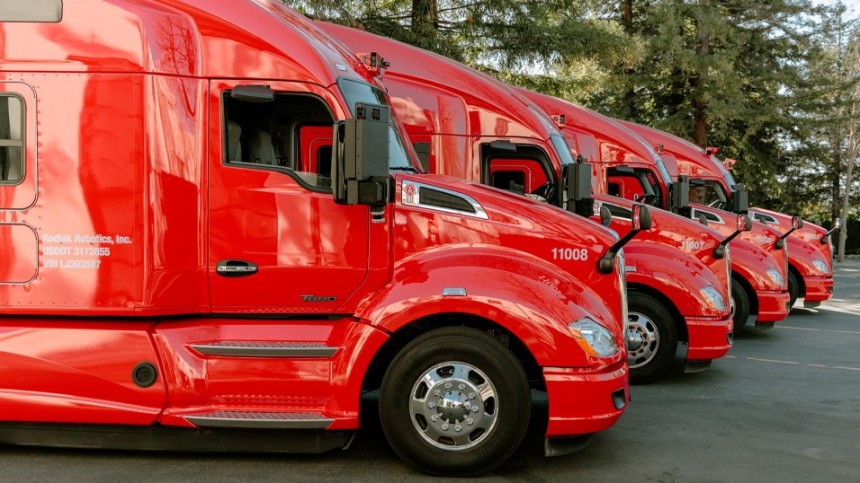California is undoubtedly the home of autonomous driving innovation. That's where companies like Waymo, TuSimple, Gatik, or Cruise are headquartered. But the State Assembly put a decisive warning forward for these industry players. The momentum gained here might soon turn into a headache for them. Here's why.
Many companies today are hard at work to make the driver irrelevant. Besides Tesla's famous Full Self-Driving Beta (FSD Beta) advanced driver-assistance system (ADAS), other key players are involved in the autonomous driving race. Robotaxis or passenger cars capable of navigating all the roads by themselves are not the end game.
Road freight transport is a vital sector where important companies for the U.S. economy meet and negotiate costs. For big players like PepsiCo or Walmart, human resources are an integral part of the business and may hinder their efforts to reach an increasing number of customers. Moreover, truck drivers can sometimes be costly. Thus, it makes sense for such big names to look for alternatives. The best one? Cut the human driver from the cost scheme for good.
Currently, seven states allow certain autonomous vehicles (AVs) to go on the road without a safety driver present. Although California is at the forefront of this movement, it does not allow AVs to operate without a safety driver if they are not licensed to do so. Just seven companies have received their licensing permit from the state's Department of Motor Vehicles (DMV) – Appolo, Autox, Cruise, Nuro, Waymo, WeRide, and Zoox. These entities are allowed to conduct driverless testing in California.
The Golden State is also one of the few in the U.S. that have agricultural inspection checkpoints for trucks. But protecting the farms from pests makes sense once you discover that California grows over 90% of the walnuts, almonds, pistachios, broccoli, strawberry, grapes, and tomatoes consumed in America.
Now, California might also be one of the first states to protect truck drivers from losing their jobs to very advanced software and the accompanying hardware. The State Assembly voted overwhelmingly to block companies from running their trucks without a safety driver present. AVs are not being made illegal through the AB 316 bill, but, if enacted, will require all trucks with a Gross Vehicle Weight Rating (GVWR) of over 10,000 lb (from Class 3 to Class 8) to have a human in the cabin.
The bill adds Section 38751 to the Vehicle Code, which states that "an autonomous vehicle with a gross vehicle weight of 10,001 pounds or more shall not be operated on public roads for testing purposes, transporting goods, or transporting passengers without a human safety operator physically present in the autonomous vehicle at the time of operation."
The Autonomous Vehicle Industry Association reacted to the vote and called the bill a "preemptive technology ban that will put California even further behind other states and lock in the devastating safety status quo on California's roads."
For the bill to become law, the State Senate must also adopt it. Then, the Governor can sign it into law or allow it to enter into effect without signing it. He or she can also veto it, but a two-thirds vote in both houses of the Legislative branch can bypass the veto.
The Democratic Party technically has a supermajority in California since it controls the State Senate and the State Assembly. The Governor is also a member of the same political party.
Road freight transport is a vital sector where important companies for the U.S. economy meet and negotiate costs. For big players like PepsiCo or Walmart, human resources are an integral part of the business and may hinder their efforts to reach an increasing number of customers. Moreover, truck drivers can sometimes be costly. Thus, it makes sense for such big names to look for alternatives. The best one? Cut the human driver from the cost scheme for good.
Currently, seven states allow certain autonomous vehicles (AVs) to go on the road without a safety driver present. Although California is at the forefront of this movement, it does not allow AVs to operate without a safety driver if they are not licensed to do so. Just seven companies have received their licensing permit from the state's Department of Motor Vehicles (DMV) – Appolo, Autox, Cruise, Nuro, Waymo, WeRide, and Zoox. These entities are allowed to conduct driverless testing in California.
The Golden State is also one of the few in the U.S. that have agricultural inspection checkpoints for trucks. But protecting the farms from pests makes sense once you discover that California grows over 90% of the walnuts, almonds, pistachios, broccoli, strawberry, grapes, and tomatoes consumed in America.
Now, California might also be one of the first states to protect truck drivers from losing their jobs to very advanced software and the accompanying hardware. The State Assembly voted overwhelmingly to block companies from running their trucks without a safety driver present. AVs are not being made illegal through the AB 316 bill, but, if enacted, will require all trucks with a Gross Vehicle Weight Rating (GVWR) of over 10,000 lb (from Class 3 to Class 8) to have a human in the cabin.
The Autonomous Vehicle Industry Association reacted to the vote and called the bill a "preemptive technology ban that will put California even further behind other states and lock in the devastating safety status quo on California's roads."
For the bill to become law, the State Senate must also adopt it. Then, the Governor can sign it into law or allow it to enter into effect without signing it. He or she can also veto it, but a two-thirds vote in both houses of the Legislative branch can bypass the veto.
The Democratic Party technically has a supermajority in California since it controls the State Senate and the State Assembly. The Governor is also a member of the same political party.




























